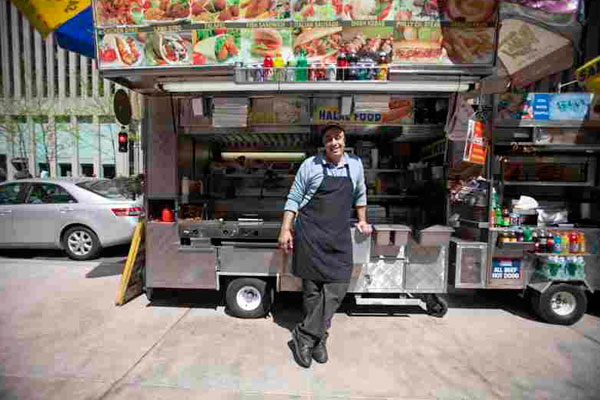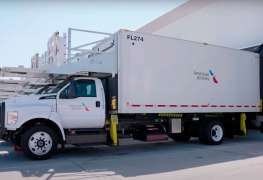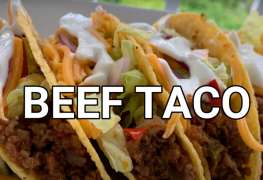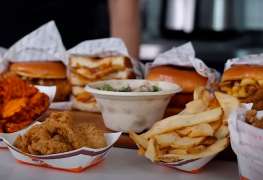 I recently went to Providence, Rhode Island to attend Brown University’s spring weekend. Massive concerts, blasting music, tipsy teenagers and ringing ears were the sights and sounds for the weekend, but the taste that I left with was unexpected. Food trucks littered the Providence streets and I soaked it in. Cheeseburgers, crepes, quesadillas – you name it, they had it within a mintue’s walk from the concerts. People wanted food, truck owners supplied it and the booming business kept a steady pace throughout the evening. My experience that evening provided me a glimpse into a booming industry currently hauling in over 800 million in revenue. Last year’s revenue logged a 3.5 percent growth and, in a 2012 article, Lauren Helper of Silicon Valley Business Journal even projected the U.S. Food Truck industry revenue to soar to well over $2 billion in the next few years.
I recently went to Providence, Rhode Island to attend Brown University’s spring weekend. Massive concerts, blasting music, tipsy teenagers and ringing ears were the sights and sounds for the weekend, but the taste that I left with was unexpected. Food trucks littered the Providence streets and I soaked it in. Cheeseburgers, crepes, quesadillas – you name it, they had it within a mintue’s walk from the concerts. People wanted food, truck owners supplied it and the booming business kept a steady pace throughout the evening. My experience that evening provided me a glimpse into a booming industry currently hauling in over 800 million in revenue. Last year’s revenue logged a 3.5 percent growth and, in a 2012 article, Lauren Helper of Silicon Valley Business Journal even projected the U.S. Food Truck industry revenue to soar to well over $2 billion in the next few years.So what is fueling the food truck industry? Many speculate that while it might seem like a temporary fad, the food truck industry will become a much more viable market opportunity than people anticipate. To start, market entry is easy because the process is relatively cost efficient – trucks are not very expensive and the amount of capital required to create and run a food truck is much cheaper than the amount required for a “brick and mortar” restaurant. On average, food trucks cost around $55,000 to $75,000, which is significantly less than the $250,000 to $500,000 standard cost of a brick and mortar operation. Aside from the start-up costs, operation costs also run at a level much cheaper than restaurants. Costs are derived from a combination of inventory (27 percent), truck insurance, repairs, fuel (26 percent) and wages (18 percent) to other factors such as fuel, licenses, websites and accessories (29 percent).
On average, most companies generate upwards of $85,000 in costs while revenue can reach around $290,000. Together, the industry of more then 4,250 trucks has seen 12.4 percent growth in revenue in the last five years, which might seem odd considering the impressive growth in market competitors. From 2011 to 2013, the number of food trucks grew by 200 percent and while many big cities like Los Angeles, New York and Chicago have saturated markets, small and unexpected cities are also leading the charge of this industry. In Hanover, two food trucks provide Dartmouth students with a variety of options ranging from falafel to pad Thai – their lines sometimes stretch for over twenty yards.
Food trucks have grown in popularity largely because of social media. Twitter allows truck owners to communicate with followers and, in some cases, owners have thousands. Roy Choi is famous for selling two dollar Korean tacos outside of nightclubs in Los Angeles and frequently tweets to his 70,000-plus followers to announce where he plans to be each night. Twitter can even provide the truck owners with feedback – Jae Kim, owner of Chil’Lantro BBQ, a Korean and Mexican fusion food truck explained that, with Twitter, he is able to see “what we’re doing wrong and fix it.” Twitter acts as a medium through which owners have a voice to connect with their customers and customers can provide feedback to the owners.
The future of the industry is largely dependent on the U.S. economy. Much like the rest of the restaurant industry, the mobile catering market is dependent on personal consumption expenditures. We can distinctly trace this relationship from the upswing of the mobile catering industry as personal consumption expenditures marked a clear upward trend. The healthy economy over the past seven years has warranted a period of easy entry and revenue growth for the food truck industry, but many fear that with a downturn in the U.S. economy, the industry will suffer along with it.
For many of the owners, this risk combined with the increase in time and investment over the past few years has made the market lose its original luster. Jethro Naude, owner of Slapfish food truck in California, mentioned in April 2014 that because of these factors, “the excitement has faded away… [and] the good ol’ days of the food truck are gone.” On the other end of the spectrum, proponents of the industry argue that a down economy would encourage growth and revenue for food truck owners. With a decrease in personal consumption expenditure during a recession, demand for high-end catering for household parties and company events would decrease. As a result, individuals and household will likely turn to cheaper alternatives like food trucks, propping up the industry and providing hope to owners like Jethro Naude.
So what do we make of all of this? Prospective owners should watch the market closely and avoid entry for now. Because food truck owners have yet to truly endure the gauntlet of a down economy, any sort of projection would be unfounded. Regardless of the economy, however, it is likely that the market will continue to grow due to low levels of saturation in thousands of medium to small sized cities across the nation. While revenue might not stretch pass $2 billion and while the restaurant industry will continue to dwarf food truck industry, food truck owners around the world will continue to push forward – filling college-aged stomachs with sustenance and creativity.
By: BENJAMIN WILSON








Leave a comment